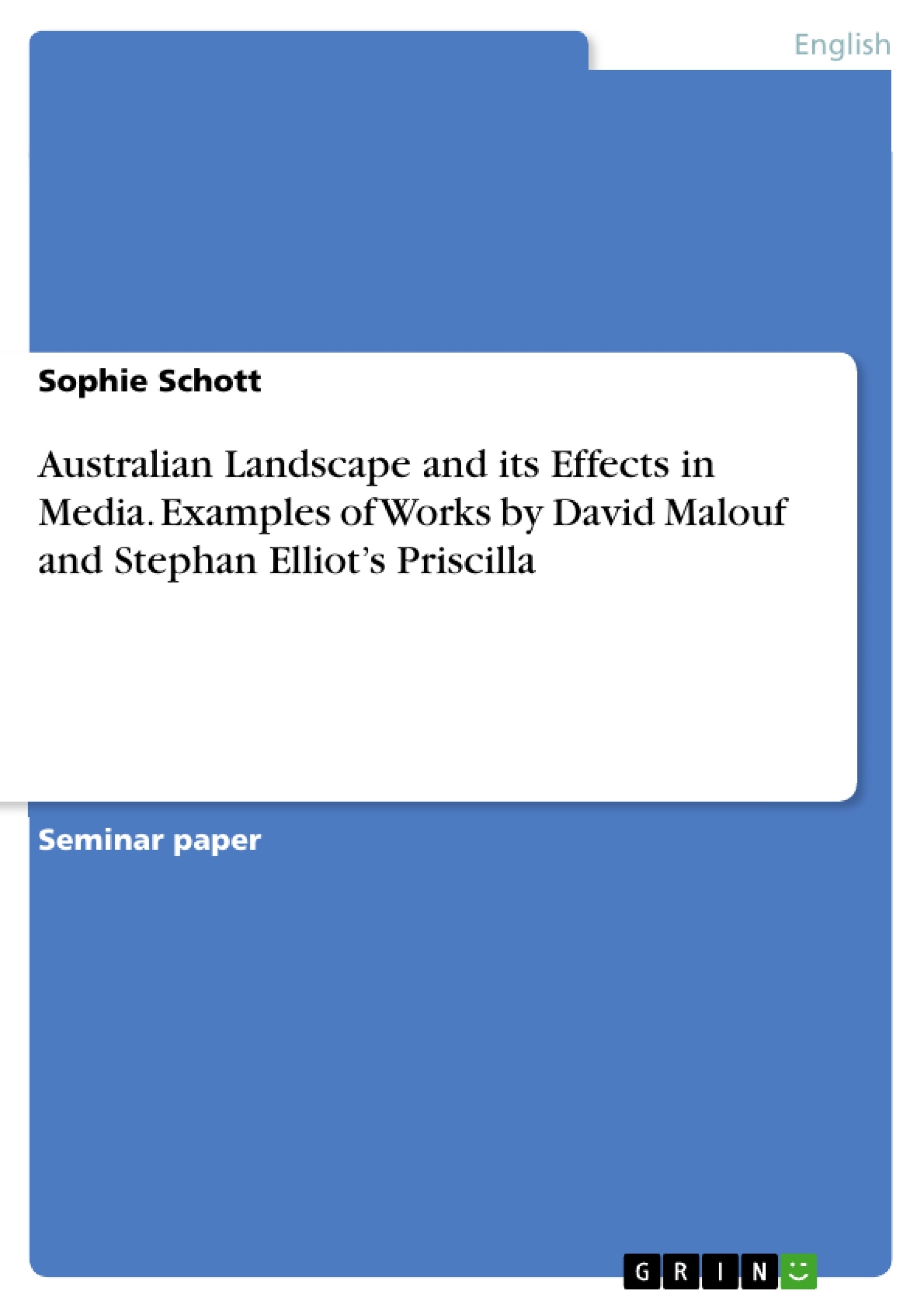Different media can present and narrate landscapes, and these presentations evoke different reactions. There are several distinctions between the visual and linguistic demonstration of landscape that can be observed and must be considered when analysing either a written description or a pictorial representation, hence the focus is laid on differences between films and novels.
A novel and a film are two separate media which utilise different methods to present landscapes. A written text leaves more room for personal interpretations, whereas a film represents really existing landscapes. The viewer has to accept the actuality of the presented pictures, which is why films limit own interpretations compared to novels. This differentiation is noticeable in the provoked feelings for the reader, respectively viewer. Examples are the short-story collections "Dream Stuff" (2000) and "Complete Stories" (2007) by David Malouf and Stephan Elliot’s film "Priscilla" (1994). The film is about three drag queens crossing the Australian Outback on their road trip from Sydney to Alice Springs. Malouf’s short stories deal with people of different age who experience landscape in different ways due to distinct events and circumstances. Both, the short stories and the film, present the landscape of Australia, but in totally different ways because of distinct techniques. A director makes use of varying camera angles, focuses and colours which lead to the feeling of being within the scene for the viewer. An author discloses the protagonists’ thoughts and feelings; consequently, the reader is able to empathise with them.
At last, the outcomes of the first two parts are related to each other. Comparing the presented landscapes in novels and films directly illustrates different methods of representation. For example, feelings like loneliness or isolation are depicted differently in these two media. In addition, this analysis also examines the level of detailed depiction of landscape, showing that the representation of landscapes in novels is more detailed compared to the represented landscapes in films.
Inhaltsverzeichnis (Table of Contents)
- Introduction
- Theoretical Approach to the Representation of Landscape given in Australian Literature
- Theoretical Approach to the Representation of Landscape given in an Australian Film
- The Presentation of Landscape Across Media
- Conclusion
- Works Cited
Zielsetzung und Themenschwerpunkte (Objectives and Key Themes)
This paper examines the representation of landscape in Australian literature and film, focusing on the differences and similarities between these media. It explores how the visual and linguistic representations of landscape evoke distinct reactions from audiences. The study analyzes the works of David Malouf and Stephan Elliot, highlighting how the portrayal of Australian landscapes in their works contributes to themes of identity, isolation, and cultural differences.
- The influence of media on landscape representation
- Different interpretations of landscape across media
- The significance of landscape in shaping identity and experience
- Cultural and social implications of landscape representation
- The role of landscape in conveying themes of isolation and difference
Zusammenfassung der Kapitel (Chapter Summaries)
The first chapter introduces the topic of landscape representation in different media, highlighting the distinct approaches used by novels and films to portray landscapes. It sets the stage for the analysis by examining the work of David Malouf and Stephan Elliot, focusing on their depictions of the Australian Outback.
The second chapter delves into the theoretical framework for understanding the representation of landscape in Australian literature. It explores the concept of narrative as a "textual act of representation" and a "mental image," emphasizing the importance of personal experiences and interpretations in shaping our understanding of landscape.
The third chapter analyzes David Malouf's short story "Closer," highlighting the themes of distance, difference, and the representation of urban and rural landscapes in Australia. The chapter emphasizes the role of landscape in shaping individual identities and highlighting cultural divides.
Schlüsselwörter (Keywords)
Landscape representation, Australian literature, Australian film, David Malouf, Stephan Elliot, identity, isolation, cultural difference, narrative, media, visual, linguistic, Outback.
- Arbeit zitieren
- Sophie Schott (Autor:in), 2014, Australian Landscape and its Effects in Media. Examples of Works by David Malouf and Stephan Elliot’s Priscilla, München, GRIN Verlag, https://www.grin.com/document/288253



